[18F]2-fluoro-2-deoxy-D-glucose incorporation by AGS gastric adenocarcinoma cells in vitro during response to epirubicin, cisplatin and 5-fluorouracil
- PMID: 17848947
- PMCID: PMC2360409
- DOI: 10.1038/sj.bjc.6603971
[18F]2-fluoro-2-deoxy-D-glucose incorporation by AGS gastric adenocarcinoma cells in vitro during response to epirubicin, cisplatin and 5-fluorouracil
Abstract
Decreased tumour [(18)F]2-fluoro-2-deoxy-D-glucose ((18)FDG) incorporation is related to response however its significance at the cell level in gastro-oesophageal cancer and how it relates to cell death is unknown. Here human gastric adenocarcinoma (AGS) cells were treated with lethal dose 10 and 50 (LD(10) and LD(50)), determined by using the MTT assay, of the three drugs, epirubicin, 5-fluorouracil and cisplatin, commonly used in the treatment of patients with gastro-oesophageal cancer. (18)FDG incorporation was determined after 48 and 72 h of treatment with each drug and related to drug-induced changes in glucose transport, hexokinase activity, cell cycle distribution and annexin V-PE binding (a measure of apoptosis). Treatment of cells for 48 and 72 h with LD(50) doses of cisplatin resulted in reductions in (18)FDG incorporation of 27 and 25% respectively and of 5-fluorouracil reduced (18)FDG incorporation by 34 and 33% respectively: epirubicin treatment reduced incorporation by 30 and 69% respectively. Cells that had been treated for 72 h with each drug were incubated in drug-free media for a further 6 days to determine their ability to recover. Comparison of the ability to recover from the chemotherapy agent, with (18)FDG incorporation before the recovery period allowed an assessment of the predictive ability of (18)FDG incorporation. Cells treated with either 5-fluorouracil or cisplatin demonstrated recovery on removal of the drug. In contrast, cells treated with epirubicin did not recover corresponding with the greatest 72 h treatment decrease in (18)FDG incorporation. In contrast to adherent cells treated with cisplatin or 5-fluorouracil, adherent epirubicin-treated cells also exhibited very high levels of apoptosis. Glucose transport was decreased after each treatment whilst hexokinase activity was only decreased after 72 h of treatment with each drug. There was no consistent relationship observed between (18)FDG incorporation and cell cycle distribution. Our results show that at the tumour cell level in gastric tumour cells, decreased (18)FDG incorporation and glucose transport, accompanies therapeutic growth inhibition. (18)FDG incorporation is particularly diminished in cells exhibiting apoptosis.
Figures
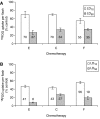
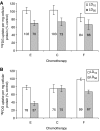
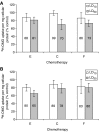
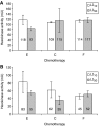
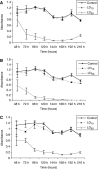
Similar articles
-
Colorectal tumor cells treated with 5-FU, oxaliplatin, irinotecan, and cetuximab exhibit changes in 18F-FDG incorporation corresponding to hexokinase activity and glucose transport.J Nucl Med. 2008 Aug;49(8):1386-94. doi: 10.2967/jnumed.107.047886. Epub 2008 Jul 16. J Nucl Med. 2008. PMID: 18632807
-
Decreased [18F]fluoro-2-deoxy-d-glucose incorporation and increased glucose transport are associated with resistance to 5FU in MCF7 cells in vitro.Nucl Med Biol. 2007 Nov;34(8):955-60. doi: 10.1016/j.nucmedbio.2007.07.007. Epub 2007 Sep 19. Nucl Med Biol. 2007. PMID: 17998098
-
Early changes in [18F]FLT uptake after chemotherapy: an experimental study.Eur J Nucl Med Mol Imaging. 2002 Nov;29(11):1462-9. doi: 10.1007/s00259-002-0925-z. Epub 2002 Sep 6. Eur J Nucl Med Mol Imaging. 2002. PMID: 12397465
-
Trastuzumab for the treatment of HER2-positive metastatic adenocarcinoma of the stomach or gastro-oesophageal junction.Health Technol Assess. 2011 May;15 Suppl 1:33-42. doi: 10.3310/hta15suppl1/04. Health Technol Assess. 2011. PMID: 21609651 Review.
-
The rate-limiting step for tumor [18F]fluoro-2-deoxy-D-glucose (FDG) incorporation.Nucl Med Biol. 2001 Jan;28(1):1-4. doi: 10.1016/s0969-8051(00)00177-3. Nucl Med Biol. 2001. PMID: 11182558 Review. No abstract available.
Cited by
-
F-18-FDG and C-11-Choline Positron Emission Tomography in Human Esophago-Gastric Cancer: Prediction of Response to Therapy.World J Oncol. 2010 Apr;1(2):66-67. doi: 10.4021/wjon2010.04.201w. Epub 2010 Apr 30. World J Oncol. 2010. PMID: 29147183 Free PMC article.
-
Resveratrol synergizes with cisplatin in antineoplastic effects against AGS gastric cancer cells by inducing endoplasmic reticulum stress‑mediated apoptosis and G2/M phase arrest.Oncol Rep. 2020 Oct;44(4):1605-1615. doi: 10.3892/or.2020.7708. Epub 2020 Jul 31. Oncol Rep. 2020. PMID: 32945472 Free PMC article.
-
Imaging the molecular signatures of apoptosis and injury with radiolabeled annexin V.Proc Am Thorac Soc. 2009 Aug 15;6(5):469-76. doi: 10.1513/pats.200901-001AW. Proc Am Thorac Soc. 2009. PMID: 19687221 Free PMC article.
-
Early reduction of glucose uptake after cisplatin treatment is a marker of cisplatin sensitivity in ovarian cancer.Cancer Sci. 2010 Oct;101(10):2171-8. doi: 10.1111/j.1349-7006.2010.01670.x. Epub 2010 Jul 30. Cancer Sci. 2010. PMID: 20678156 Free PMC article.
-
Pyrimidine Schiff Bases: Synthesis, Structural Characterization and Recent Studies on Biological Activities.Int J Mol Sci. 2024 Feb 8;25(4):2076. doi: 10.3390/ijms25042076. Int J Mol Sci. 2024. PMID: 38396753 Free PMC article.
References
-
- Al-Saeedi F, Welch AE, Smith TA (2005) [methyl-(3)H]Choline incorporation into MCF7 tumour cells: correlation with proliferation. Eur J Nucl Med Mol Imaging 32: 660–667 - PubMed
-
- Aloj L, Caraco C, Jagoda E, Eckelman WC, Neumann RD (1999) Glut-1 and hexokinase expression: relationship with 2-fluoro-2-deoxy-D-glucose uptake in A431 and T47D cells in culture. Cancer Res 59: 4709–4714 - PubMed
-
- Barros LF, Porras OH, Bittner CX (2005) Why glucose transport in the brain matters for PET. Trends Neurosci 28: 117–119 - PubMed
-
- Barry MA, Behnke CA, Eastman A (1990) Activation of programmed cell death (apoptosis) by cisplatin, other anticancer drugs, toxins and hyperthermia. Biochem Pharmacol 40: 2353–2362 - PubMed
-
- Bartkowiak D, Hemmer J, Rottinger E (1992) Dose dependence of the cytokinetic and cytotoxic effects of epirubicin in vitro. Cancer Chemother Pharmacol 30: 189–192 - PubMed
Publication types
MeSH terms
Substances
LinkOut - more resources
Full Text Sources
Medical
Research Materials

